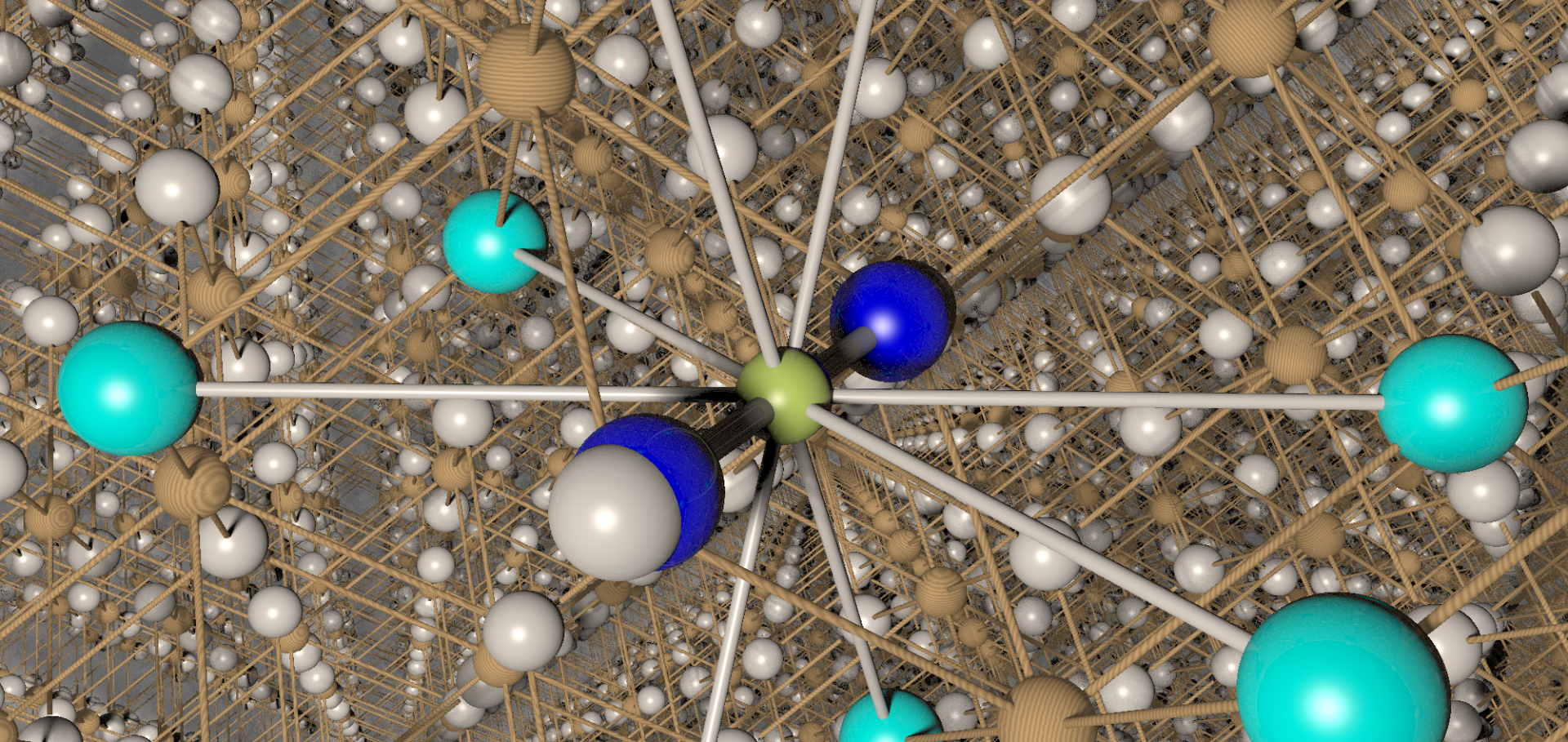Studies of the magnetoresistive peak due to interlayer coherence in a quasi-two-dimensional superconductor
SYNTHETIC MET 133 (2003) 173-175
Abstract:
Peaks in the interlayer magnetoresistance of the layered superconductor kappa-(BEDT-TTF)(2)Cu(NCS)(2) are observed in the presence of an exactly in-plane magnetic field. The existence of these resistance peaks implies the presence of a three-dimensional Fermi surface extending in the interlayer region. Analysis of the width of the peaks yields a value for the interlayer transfer integral. (C) 2002 Elsevier Science B.V. All rights reserved.mu SR studies of the interaction between magnetism and superconductivity in kappa-BETS2FeCl4
SYNTHETIC MET 133 (2003) 489-492
Abstract:
Zero field (ZF) muon spin relaxation measurements on the organic metal kappa-BETS2FeCl4 clearly show the formation of an antiferromagnetically ordered state below T-N = 0.45 K. The magnetic order remains unperturbed on cooling through the superconducting transition T-c similar to0.17 K, providing unambiguous evidence for the coexistence of antiferromagnetic order and superconductivity in this system. Detailed studies of the internal field distribution show contrasting behavior for different muon sites and provide experimental evidence for an ordered spin structure in the BETS layers in addition to that taking place in the Fe layers. (C) 2002 Elsevier Science B.V. All rights reserved.μSR studies of the interaction between magnetism and superconductivity in κ-BETS2FeCl4
Synthetic Metals 133-134 (2003) 489-492
Abstract:
Zero field (ZF) muon spin relaxation measurements on the organic metal κ-BETSAngle-dependent vortex structure in a high anisotropy superconductor
Physica B: Condensed Matter 326:1-4 (2003) 374-377
Abstract:
Angle-dependent muon spin rotation measurements have been made on the organic superconductor κ-(BEDT-TTF)2Cu(SCN)2. Oscillations are observed in the width of the internal field distribution, which are periodic in the perpendicular component of the applied magnetic field, Bz = B cos θ, with a uniform period over a range of angles and fields. These oscillations are superimposed on the standard cos θ scaling expected for the width in a highly anisotropic superconductor. The oscillation period is of order 2 mT and the amplitude is particularly strong at fields comparable with the period. The origin of this novel phenomenon is discussed in terms of the low field instabilities of tilted vortices in this highly anisotropic superconductor. © 2002 Elsevier Science B.V. All rights reserved.μSR in polymers
Physica B Condensed Matter 326:1-4 (2003) 34-40


